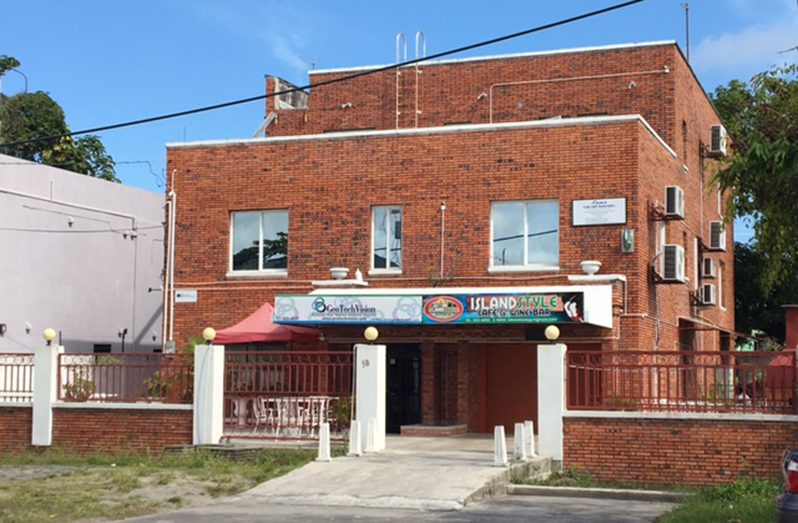By Francis Quamina Farrier

THERE is a well-known saying, “When life gives you lemons, make lemonade.” Not so well-known is the saying (My saying) – “When life gives you MUD, make Clay Bricks.” As a boy growing up in the colony of British Guiana, in the years immediately after the Second World War, (The mid-1940s into the 1950s), I constantly heard immigrants, especially from the West Indian islands, refer to us Guianese as “Mud Heads,” because the first area of the colony they set foot on was usually the mud of the coastlands. Guianese in turn called the West Indian immigrants, “Palawallas.” It was all in a friendly way. My own father who came to British Guiana from Grenada, was, of course, a “Palawalla.” So what was the origin or reason for that word “Palawalla?” It was because of the way the immigrants from the English-speaking Eastern Caribbean to British Guiana spoke, which was sort of as though they had water in their mouths making a sort of gargling sound – English mixed with French -“palawalla.”
So the Guianese coined that word, “Palawalla.” That was a part of the beginning of my rich groundings as a “Caribbean Man.” The thing about my father is, because he was a teacher in Grenada before venturing out to find El Dorado in South America, he brought his knowledge with him. However, because there is so much mud on the coastland of Guyana, and being an innovative people, Guianese used some of our mud to make clay bricks for construction. There is evidence of clay bricks being used for construction well over a century ago. The relic of a koker located at the junction of Camp and Cowan Streets in Georgetown bears such evidence. In more recent years, buildings such as the National Insurance Scheme (NIS) buildings, the north-east section of the Georgetown Public Hospital and the National Cultural Centre are prime examples. All of them are still around decades after their construction and looking as good as new after so many decades. Sadly, the making of clay bricks in a big way and their use for construction is no longer done as much as in years gone by. To find out more how Guyanese of this era view clay bricks for construction, I posted on Facebook the three-storey clay brick building which is located on Middle Street in Georgetown, near to Main Street. Here now are samples of the responses received.

COMMENTS ABOUT THE USE OF CLAY BRICKS
Ulric Trotz: “Clay bricks are a preferred building material to cement blocks, as cement manufacturing is one of the most polluting materials in that the process releases carbon dioxide (Greenhouse gas) into the atmosphere.”
Ralph Seeram: “They were built at a time when emphasis was on self-reliance. Most of NIS and other government buildings were built of clay bricks and still standing strong. If Guyanese did it then with less resources, they can resuscitate it today.”
Bernard Stuart: “Part of my house is made of clay bricks that I bought many years ago from the factory at West Demerara. Over the years all the (concrete) walls cracked except the clay bricks sides.”
Berkley Wickham: “The clay bricks were manufactured at the Bel-Lu clay brick factory located at Canal Number 2, West Bank Demerara. Clay bricks were also used on secondary roads, some which still exist. The factory was a gift to Guyana from China. It is sad that we no longer produce these items. We never seem to celebrate our own heritage and always look elsewhere.”
Derek Kowlessar: “Sadly we stopped doing this a long time ago at the factory we had, but we have talent and resources.”
Carlton Joao: “And thanks to innovative architects like George Henry, who used the material extensively in his designs. NIS Headquarters on Brickdam. Do you know we now import clay blocks from the Caribbean?”
Michael Persaud: “I cringe when I see those imported clay bricks. Pity the man who does not produce his own food.”
Covergirl Tait: “I wish more Guyanese would love and appreciate ourselves and our abilities.”
James Albert Burke: “Folks will continue to use concrete blocks because they are easier to make and are cheaper. Obviously clay is superior, lighter, better heat-insulating more preferred. Currently, for those who can afford it, clay blocks are imported from Trinidad.”
Roshan Khan “The clay brick factories should never have been sold out. They should never have been sold.”

ANY FUTURE FOR CLAY BRICK MANUFACTURING?
History has revealed that clay bricks have been a material of choice for construction here in Guyana for well over a century. Should such an enterprise be reconsidered and reactivated, it would be a means not only for construction, but also as another source for jobs for young people. Should a member of the private sector or the public sector consider clay brick manufacturing a viable enterprise in the future? Back to the future, as it were. At least the raw material is abundant – mud. And even though Guyanese are no longer referred to as such, we are still loving, innovative, patriotic MUDHEADS.












